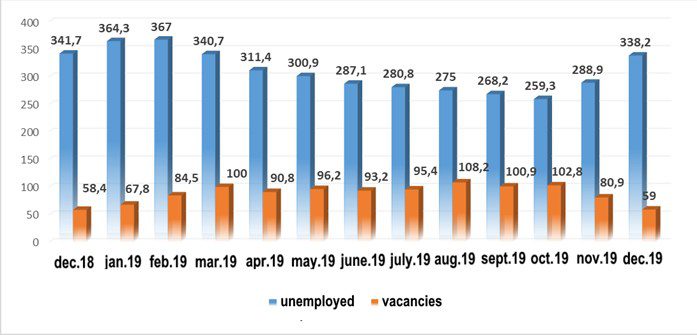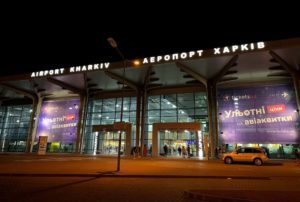
Vesco Limited (Cyprus), uniting the clay mining business of UMG investment company from SCM Group, in 2019 reduced gross revenue by 6% compared to 2018, to $97.2 million.
According to a company press release, last year Vesco sold 2.7 million tonnes of clay, of which about 86% was exported to 25 countries. The largest consumers were ceramic tile manufacturers in Spain: they accounted for more than 30% of all sales.
“We have a stable business model and international relations for years. Therefore, we clearly understand periodic slight fluctuations in the markets. Last year, customers from Spain and Italy revised their stocks, therefore we adjusted production volumes. We worked as normal, with 100% of staff engaged, but without growth in sales volumes,” Vesco CEO Yevhen Tsymarman said.
According to him, pre-orders have already been received from the key customers, according to which the volumes lost during the optimization of partners’ warehouses are returned in 2020. Given that the global economy is expected to slow down, which may cause a decrease in production in many industries, the most realistic scenario for this year is to maintain sales volumes at the level of last year, the top manager notes.
“In 2020, we will focus on the implementation of strategic goals: strengthening the balance of raw materials and developing the “flexibility” of the product portfolio. At any time, we are ready to provide shipment of both existing and additional volumes of clay,” he said.

Kharkiv International Airport in February 2020 increased passenger traffic by 57% compared to the same period in 2019, to 103,400 people.
According to the airport’s Facebook page, the total number of departures was 421.
The most popular destinations were Sharm el-Sheikh (Egypt), Istanbul (Turkey), Boryspil (Kyiv), Krakow, Warsaw, Gdansk, Katowice, Poznan, Wroclaw (all Poland), Vienna (Austria).
As reported, the passenger flow of Kharkiv International Airport in 2019 increased by 40% compared to the same period in 2018, to 1.3 million people.
Kharkiv airport has a runway 2,500 meters long and 50 meters wide. Two passenger terminals with a capacity of 100 and 650 people are located on its territory.
Number of unemployed in Ukraine and job opportunities in dynamic from Dec 2018 to Dec 2019 (graphic)


Kharkiv International Airport in February 2020 increased passenger traffic by 57% compared to the same period in 2019, to 103,400 people. According to the airport’s Facebook page, the total number of departures was 421. The most popular destinations were Sharm el-Sheikh (Egypt), Istanbul (Turkey), Boryspil (Kyiv), Krakow, Warsaw, Gdansk, Katowice, Poznan, Wroclaw (all Poland), Vienna (Austria).
As reported, the passenger flow of Kharkiv International Airport in 2019 increased by 40% compared to the same period in 2018, to 1.3 million people.
Kharkiv airport has a runway 2,500 meters long and 50 meters wide. Two passenger terminals with a capacity of 100 and 650 people are located on its territory.
National bank of Ukraine’s official rates as of 06/03/20

Source: National Bank of Ukraine